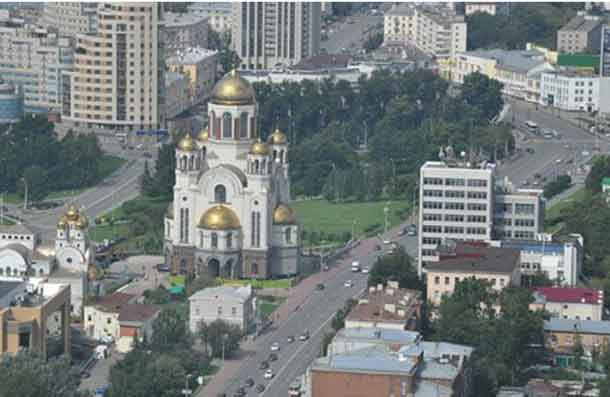On World Cities Day, the U.N. chief highlights the need to build resilience to disasters and other threats in fast-growing urban areas
By Megan Rowling
BARCELONA (Thomson Reuters Foundation) – As 1.4 million people move to cities each week, local abilities to keep residents safe can become strained, increasing the risk of disasters, warned the United Nations secretary-general.
“The answer is to build resilience to storms, floods, earthquakes, fires, pandemics and economic crises,” said Antonio Guterres in a message for World Cities Day on Wednesday.
Cities are already pressing on with that work, he noted. Bangkok has built underground tanks to store excess rainfall and prevent floods, while Johannesburg inhabitants are joining in efforts to improve public spaces.
As urban areas sucked in 55 percent of the planet’s population – a figure U.N. estimates say will rise to 68 percent by 2050 – the need to find new ways to cope with modern-day pressures such as climate change has become more acute.
But it involves far more than dodging disasters, experts said.
“Investment in resilience isn’t just about avoiding losses and keeping bad things from happening, it’s about catalysing growth and opportunity,” said Marc Forni, lead specialist for urban resilience at the World Bank.
“One of the things that makes urban resilience an exciting topic is that it’s quite entrepreneurial – you have interesting innovation from all different areas,” he added.
That includes cutting-edge technologies to help cities use complex geospatial data to tackle flooding or pollution, often at a falling cost, Forni and others said.
With cloud computing and satellite imagery, U.S. cities can now map their geographical footprint in real-time, added Forni, noting the technology could soon be applied to monitor floods.
FINANCE GAP
While the toolkit of solutions for cities is expanding fast, deployment can hit financial, political and other barriers.
The U.S.-based 100 Resilient Cities (100RC) network, which is backed by The Rockefeller Foundation, has spent five years assisting its cities to craft strategies for dealing with physical, social and economic challenges.
About half its members – from Buenos Aires and New Orleans to Paris and Amman – have completed their plans, with the rest expected by the end of 2019.
“What’s harder is to help cities take that next step, which is actually doing things,” said Michael Berkowitz, president of 100RC, which now aims to link cities with the partners and resources they need to implement their strategies.
Sometimes cities need only small amounts of help, he added. In the case of Jakarta, about $40,000 and some engineering expertise was required to try out new biotechnology to treat wastewater in communities, Berkowitz said.
Municipalities often struggle to prepare bankable projects that can tap into financial markets, he and others said.
“There’s a tonne of interest … from big commercial banks to impact funds – billions and billions of dollars are wanting to invest in green things,” said Todd Gartner, director of the World Resources Institute’s Natural Infrastructure Initiative.
But private investors often shy away because they perceive the risks as too high for the expected returns, he added.
Berkowitz said cities would need support in the form of project design and financial structuring to bridge the gap.

POLITICAL TENSION
Cities can also achieve a lot by reallocating their existing resources, and finding new ways to raise money, experts noted.
For example, New Zealand’s quake-prone capital, Wellington, screens its budget to maximize the resilience benefits of its spending, and its electric utility recently levied a surcharge to upgrade the power network against disasters, Berkowitz said.
In Africa too, some cities are making progress on mobilising money for better infrastructure – whether green bonds issued by South African cities or Kenyan water utilities accessing commercial loans with support from central government and the World Bank, researchers said.
Yet many cities in sub-Saharan Africa lack the resources to improve services and reduce environmental risks for residents, particularly in slums, said Sarah Colenbrander of the London-based International Institute for Environment and Development.
As well as tiny municipal budgets, they often suffer neglect by central government, which has traditionally focused on larger voter bases in rural areas.
Political tensions can also hamper efforts to tackle urban poverty and infrastructure deficits, as opposition to the ruling party tends to foment in African cities, Colenbrander said. “If you starve (cities) of basic infrastructure and basic services, then you only get the costs of that population density and none of the benefits,” she said.
LATIN AMERICAN LAB
The region that has made the largest leaps in resilience in the past 10 to 20 years is Latin America, experts said.
Robert Muggah, the co-founder of the Brazil-based Igarape Institute, said conditions had been ripe for Latin American cities to act as a “laboratory”, given its swift urbanization.
U.N. data shows the proportion of the region’s population living in cities jumped from about 40 percent to 80 percent between 1950 and 2015.
Mayors and urban planners had to react fast with limited resources but enjoyed the freedom to experiment, as countries shifted from dictatorship to democracy and devolved power downwards, he noted.
Cities like Brazil’s Curitiba and Medellin in Colombia experimented with integrated public transport, such as bus rapid transit and cable cars, to better connect outlying slum neighbourhoods with workplaces, and public housing programmes.
Today, Ecuador’s capital Quito is working with property developers to construct eco-friendly buildings around stations on its new metro line, due to open next year, aimed at providing central, affordable and low-risk homes.
It is also looking to companies and central government to help retrofit homes in informal communities vulnerable to disasters, said David Jacome Polit, chief resilience officer for the city which faces threats such as floods and earthquakes.
Latin American officials have been less motivated to act on longer-term climate change impacts, such as rising seas that threaten cities in Brazil where about 60 percent of people live in coastal areas, said Muggah.
But the political focus is likely to shift as climate stresses grow, he added.
In Brazil, which has about a fifth of the world’s freshwater reserves, some 800 cities face chronic water shortages, he said.
Hit by drought in recent years, major cities such as Sao Paulo and Rio de Janeiro came close to running out of water, and have sought better ways to manage supply and demand.
Climate change will require cities in the Americas to rethink their systems for energy, water distribution and sanitation, Muggah added.
“It is forcing itself on the agenda, and mayors are increasingly having to be responsive,” he said. “They don’t have a choice.”
(Reporting by Megan Rowling; additional reporting by Sophie Hares in Mexico; editing by Zoe Tabary. Credit the Thomson Reuters Foundation)








